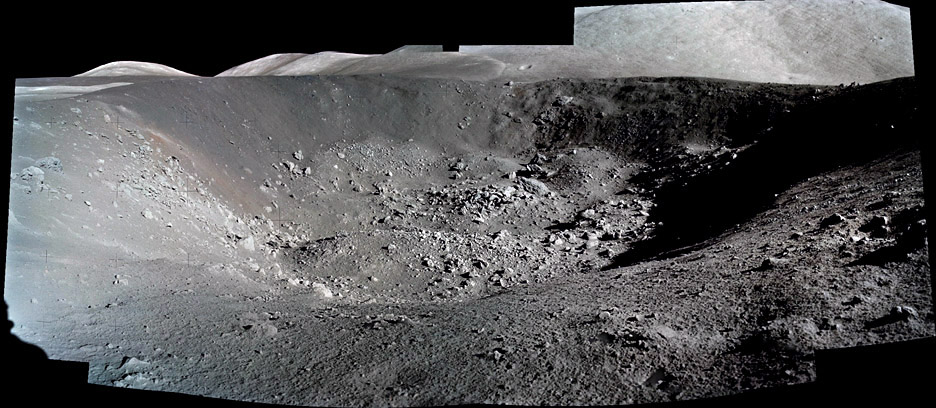
images by Apollo 17 astronauts, mosaicked byTony Gondola
Shorty Crater is the most colorful crater on the Moon. Whereas lunar surface materials can mostly be described in shades of gray, bright orange soil was visible to Apollo 17 astronauts in the rim of the 110 m wide Shorty Crater. When he discovered it astronaut Harrison Schmitt thought that the orange material was volcanic ash, but he was troubled by the rim’s rocky breccia which is a characteristic of impact craters. Schmitt was doubly right, although the full story didn’t become clear for a few years. The orange soil includes tiny (0.04 mm) glass spheres that vigorously erupted 3.64 billion years ago. The ash formed a layer that was disturbed 30 million years ago when Shorty Crater formed. You have heard of dark-halo craters - Shorty is almost an orange halo crater. Rock debris – and orange soil – have slid downslope, filling the floor with rock-strewn mounds.
Technical Details:
12 December 1972, Hasselblad camera. Mosaic assembled by Tony Gondola using frames AS17-137-20991 to AS17-137-20998.
Related Links:
Rükl chart 25
Orange soil - Lunar Surface Journal
Orange soil close-up
Yesterday's LPOD: A Tale of Two Craters
Tomorrow's LPOD: Incoming!
COMMENTS?
Register, and click on the Discussion tab at the top of the page.
Contributions to http://www2.lpod.org/ are licensed under a Creative Commons Attribution No-Derivative-Works Non-Commercial 3.0 License. 



